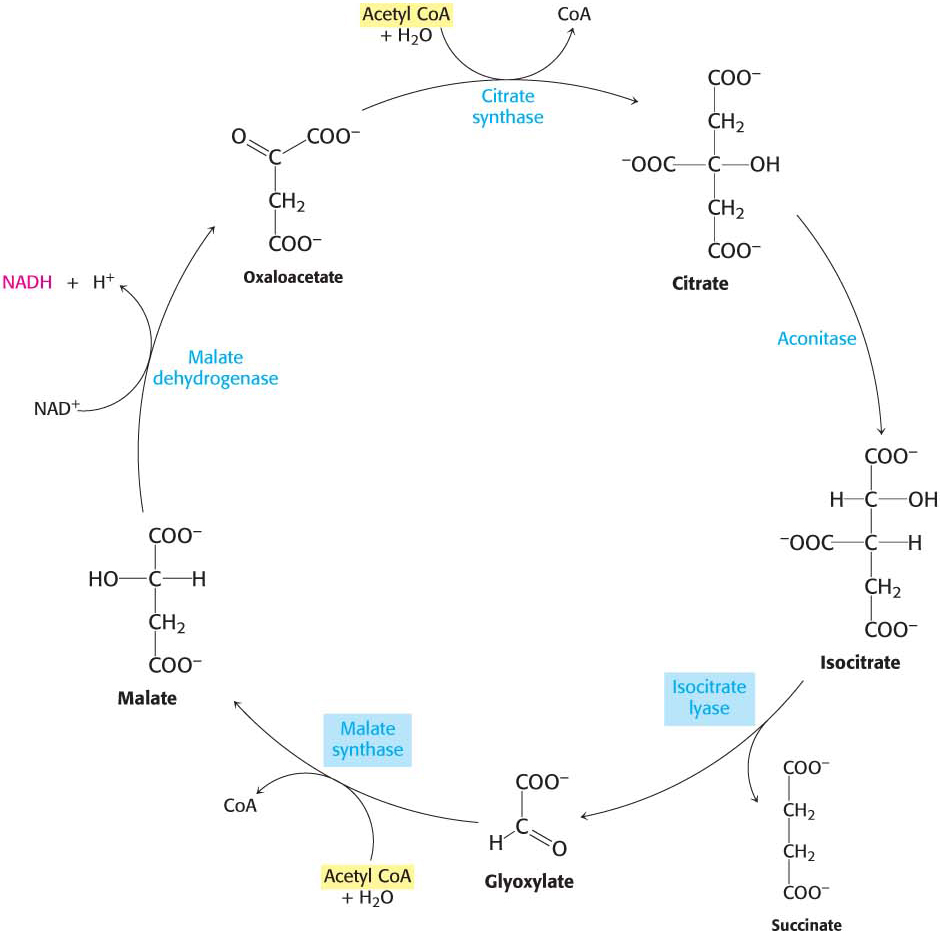
19.5 The Glyoxylate Cycle Enables Plants and Bacteria to Convert Fats into Carbohydrates
Acetyl CoA that enters the citric acid cycle has only one fate: oxidation to CO2 and H2O. Most organisms thus cannot convert acetyl CoA into glucose, because, although oxaloacetate, a key precursor to glucose, is formed in the citric acid cycle, the two decarboxylations that take place before the regeneration of oxaloacetate preclude the net conversion of acetyl CoA into glucose.
In plants and some microorganisms, a metabolic pathway does indeed exist that allows the conversion of acetyl CoA generated from fat stores into glucose. This reaction sequence, called the glyoxylate cycle, is similar to the citric acid cycle but bypasses the two decarboxylation steps of the cycle. Another important difference is that two molecules of acetyl CoA enter per turn of the glyoxylate cycle, compared with one molecule in the citric acid cycle.
The glyoxylate cycle (Figure 19.10), like the citric acid cycle, begins with the condensation of acetyl CoA and oxaloacetate to form citrate, which is then isomerized to isocitrate. Instead of being decarboxylated, as in the citric acid cycle, isocitrate is cleaved by isocitrate lyase into succinate and glyoxylate. The ensuing steps regenerate oxaloacetate from glyoxylate. First, acetyl CoA condenses with glyoxylate to form malate in a reaction catalyzed by malate synthase, and then malate is oxidized to oxaloacetate, as in the citric acid cycle. The sum of these reactions is


In plants, these reactions take place in organelles called glyoxysomes. This cycle is especially prominent in oil-
